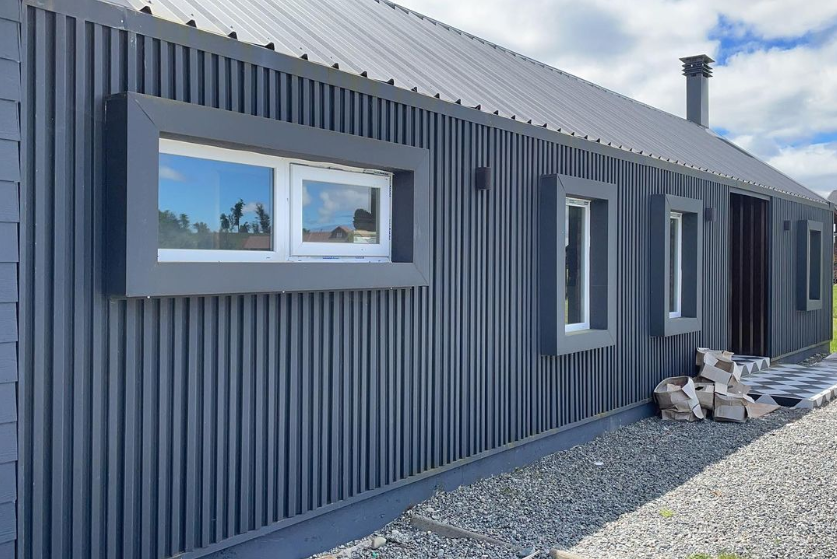Factory for Manufacturing Roller Shutter Door Forming Machines and Equipment
The Rise of Roller Shutter Door Forming Machines A Comprehensive Overview
In recent years, the construction and manufacturing sectors have witnessed a significant transformation, particularly with the introduction of advanced machinery. One such innovation that has gained traction is the roller shutter door forming machine. These machines specialize in the efficient production of roller shutter doors, a popular choice in commercial and industrial settings for their security, durability, and versatile design.
Understanding Roller Shutter Doors
Roller shutter doors are made of horizontal slats or panels that roll up and down, providing an effective barrier against unauthorized entry while allowing for easy access. They are commonly used in warehouses, shopping malls, and garages, making them an essential component of modern architecture and infrastructure. As urban development continues to surge, the demand for these doors is set to increase, paving the way for the roller shutter door forming machine market.
Functionality of Roller Shutter Door Forming Machines
A roller shutter door forming machine is engineered to streamline the production process of shutter doors. The machine features several key components, including
1. Material Feeding System This system ensures that the raw material, typically made from steel or aluminum, is fed into the forming line at a consistent speed and quantity.
2. Roll Forming Station Here, the raw material is shaped into the desired profile. The machine employs a series of rollers that gradually bend the material until it achieves the required dimensions and design.
3. Cutting Unit After forming, the door panels are cut to specific lengths using high-precision cutting tools. This step is crucial for ensuring that each panel meets the design specifications.
4. Control Panel An advanced digital control system manages the entire production process, ensuring high accuracy and minimizing human error. Operators can easily adjust settings such as speed, length, and thickness, making the machine versatile for different production needs.
5. Coating Station To enhance the durability and aesthetics of the doors, a coating unit may be included. This unit applies a protective finish, preventing rust and wear, and allowing for various color options.
roller shutter door forming machine factory

Benefits of Using Roller Shutter Door Forming Machines
Investing in a roller shutter door forming machine offers several advantages for manufacturers
- Increased Production Efficiency These machines can produce doors at a significantly faster rate than traditional methods, allowing manufacturers to scale their operations.
- Cost-Effectiveness Automation reduces labor costs and waste, leading to increased profitability. Over time, the initial investment in a forming machine can be offset by the savings in production and material costs.
- Customizability Manufacturers can easily adjust the machine settings to produce various styles and sizes of roller shutter doors, catering to diverse customer needs.
- Enhanced Quality Control The precision engineering of forming machines ensures that each door produced meets strict quality standards, which can lead to higher customer satisfaction and fewer returns.
The Future of Roller Shutter Door Manufacturing
As technology continues to advance, the roller shutter door forming machine industry is poised for growth. Innovations such as Industry 4.0 and smart manufacturing will further enhance production capabilities, allowing for real-time monitoring and optimization of processes. Manufacturers that embrace these technologies are likely to gain a competitive edge in the market.
Moreover, the global push for sustainability is influencing manufacturing practices. As eco-friendly materials and energy-efficient production methods become more prominent, roller shutter door forming machines could evolve to accommodate these changes, focusing on reducing their environmental footprint.
Conclusion
The roller shutter door forming machine represents a significant advancement in the manufacturing sector. As the demand for roller shutter doors continues to rise, understanding the capabilities and benefits of these machines can help manufacturers produce high-quality, customizable products efficiently. Embracing this technology not only enhances operational efficiency but also positions manufacturers to meet the evolving needs of the market and contribute to a more secure and sustainable future in construction and design.
-
Roof Panel Machines: Buying Guide, Types, and PricingNewsJul.04, 2025
-
Purlin Machines: Types, Features, and Pricing GuideNewsJul.04, 2025
-
Metal Embossing Machines: Types, Applications, and Buying GuideNewsJul.04, 2025
-
Gutter Machines: Features, Types, and Cost BreakdownNewsJul.04, 2025
-
Cut to Length Line: Overview, Equipment, and Buying GuideNewsJul.04, 2025
-
Auto Stacker: Features, Applications, and Cost BreakdownNewsJul.04, 2025
-
Top Drywall Profile Machine Models for SaleNewsJun.05, 2025








